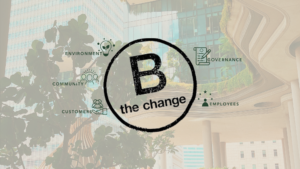Is Corporate Social Responsibility (CSR) a thing of the past? A lot of reasons point to yes. The good news? Businesses are instead focusing on stronger environmental, social, and governance (ESG) goals. That means business models that are good for business and society.
What’s wrong with CSR?
Since the 1970s and ’80s, CSR has been a helpful step in recognizing the value of ethical business practices. But it may be sending companies down the wrong path. CSR’s emphasis on “doing good” has primarily led to companies participating in charity matching and volunteer activities. Then, there is ESG (environmental, social, and governance). ESG’s emphasis on “being good” leads companies to healthier operations that benefit the business and society.
Done right, the difference between CSR and ESG is embedded purpose and positive impact. And increasing the number of impact-driven companies brings far greater value to society and the business than CSR programs alone.
Why ESG?
Put simply, embedded purpose and positive ESG impact means that a business’s success is good for society. It means employment practices, supply chain relationships, environmental impact, and customer care practices are aligned with purpose and values. On the other hand, CSR programs are easy to implement. They make employees and leaders feel good and help local non-profits. So why take on being purpose-driven or impact-driven? Because:
- Consumers and employees are demanding that companies operate ethically and sustainably, and that they prioritize ESG goals
- Soon, laws and regulations will be in favor of ESG standards, not short-term profit
- Purpose-driven and impact-driven businesses are far less likely to face PR and legal crises
- And, they position themselves more clearly and authentically in the market, making customers and employees loyal brand champions
How to move to ESG
New Commodity is on a mission to make sure every business is purpose- and impact-driven. So we want to share a few ways to make it easier and more intentional. Here are four steps for getting started on your ESG and positive impact journey.
1. Articulate
Embedding positive ESG impact starts with clearly stating the company’s purpose in a way that makes sense of its products, services, and activities. So, to get started, consider your company’s values and where the company has the most opportunity for positive impact and ESG standards. Be sure to include a diverse group of stakeholders in this process.
2. Assess
Conduct a materiality assessment to make sure your company’s practices align with its purpose and impact goals. Review practices with a critical eye toward sustainability, diversity, inclusion, and community & stakeholder support.
3. Prioritize
Taking on too much can burn out your people and your resources, leaving the company disheartened by the effort. Instead, prioritize areas where you can have quick wins. At the same time, build an action plan for one or two long-term impact goals. (Be sure to include metrics and resource planning.)
4. Balance
Balance the needs of as many stakeholders as you can. For instance, there are likely impact improvements that would both increase profit margins and reduce your carbon footprint. Or you may find improvements that would reduce operating costs and benefit your supply chain.
Reaping the benefits of ESG
Setting ESG goals and raising its ESG standards increases your company’s value. First, aligning operations to higher ESG standards often results in OPEX savings. While there may be an up-front cost to solutions, many will see a significant ROI. For example, renewable energy results in lower energy bills and tax incentives. Companies with operations well-aligned to higher ESG standards also gain more trust from governments and banking institutions.
Beyond the financial value of ESG standards, there are brand value benefits. In the short-term, transparently raising ESG standards generates interest and excitement in your company. And in the long-run, successfully meeting higher ESG standards creates loyal brand champions among your employees, customers, and suppliers.
But most important of all is the positive impact your business will contribute to society and the planet.






